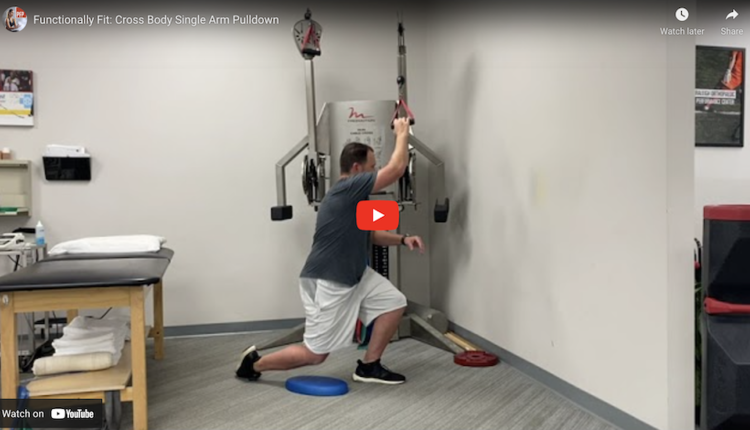In the prior column, I discussed the importance of avoiding dynamic valgus as it pertains to injury prevention. This exercise is a progression from the linear single leg box jumps that is designed to work on developing proper landing form in the transverse plane.

Execution: Start by balancing on the left leg. Perform a single leg jump rotating clockwise 90 degrees and landing with a soft knee and the toes pointing forward. After pausing for 1-2 seconds, perform a clockwise 90 degree jump returning to the start position. Perform 1-2 sets of 5 repetitions each way and switch legs.
Again, the emphasis is not on height, but more so landing in a controlled manner with minimal to no dynamic valgus. It will probably be necessary to cue the client to absorb force and move into hip flexion versus standing upright or landing with a stiff knee upon landing. Quality is more important than quantity, so be sure to encourage the client to move slowly and deliberately to avoid excessive frontal plane collapse or a trunk dominant landing strategy.
Application: Keep in mind that most non-contact lower extremity injuries occur in the transverse plane. This exercise is an advanced training option to improve landing form and hip stability in the transverse plane. This is one of my preferred exercises for advanced ACL rehab, as well as ACL prevention training. It really forces the client to react and control their body weight in a less predictable manner as compared to linear jumping.
Progressions:
1.Increase the height of the jumps
2.Perform 5-10 consecutive jumps in the same direction and then reverse directions



















